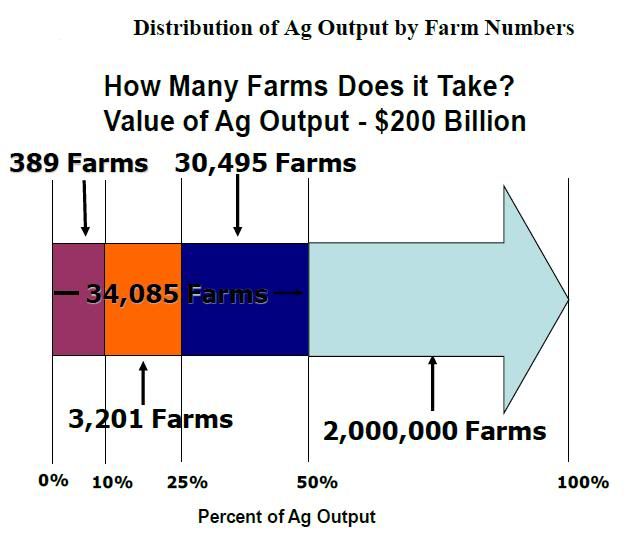
Above: When we discuss whether we can weather a storm, who are we talking about? Are we talking about the 389 farms that produce 10 percent of what we have? Are we talking about the 34,000 farms that produce half, or the other 2 million farms that produce the other half? As we look at the risk management ability and risk management tools, the strategies are different in each one of these pools.
There will be a lot more ripple effects from stressed events that happen with the largest 389 farms. My point of emphasis here and throughout is we can’t look through this large lens. We have to be more careful about evaluating the different risks among the different farms.
Getting back to evaluating some of the farm financial conditions and trying to get some distributional aspects of this, Brian Briggeman – former economist here at the Kansas City Fed – used USDA data to illustrate how much debt farms were carrying, compared with what they could carry.
What he did, and it was very well-done – was to determine how much debt could a farm support, given the level of income and how much is that compared with what they actually are borrowing. Results indicate that farms, in general, had adequate repayment capacity.
Livestock farms, young farms, and large farms were the most vulnerable to changes.
----Paul Ellinger (University of Illinois)
source: A Symposium for Recognizing Risk in Global Agriculture; Federal Reserve Bank of Kansas City; July 19-20, 2011 [pdf]